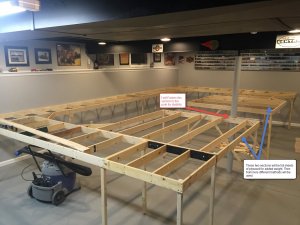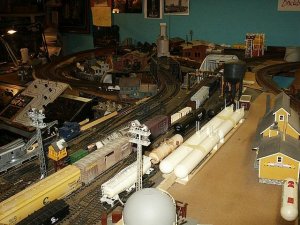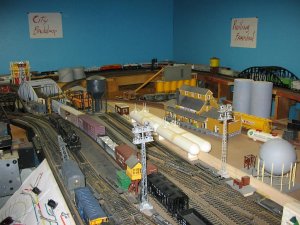Hawkesburytrain
Well-Known Member
Like Chet said, I also used the cookie cutter approach. It makes it a lot easier to have access installing all the wiring, tortoises and scenery. I'm using 1/2" plywood under the tracks and it's cut 4" wide, the rest will be plaster and foam. Some locations are large plywood areas because I know that a certain industry goes there and that there's no elevation changes.
Now, if you're not going to have any elevations, where everything is flat, then it's much easier to just install a full sheet of plywood or foam, but you're stuck having to work under the table often and just a bit more expensive. When I started on my first layout, I was building one huge flat layout and when I started working under the table, I was getting very frustrated. Being almost 6' tall, I noticed that at 56 years old, the body doesn't bend that well and not for long....LOL
Now that I know better, I tore down the layout after 1 year of work and just started on a new one.
P.S. I like your neatness
Now, if you're not going to have any elevations, where everything is flat, then it's much easier to just install a full sheet of plywood or foam, but you're stuck having to work under the table often and just a bit more expensive. When I started on my first layout, I was building one huge flat layout and when I started working under the table, I was getting very frustrated. Being almost 6' tall, I noticed that at 56 years old, the body doesn't bend that well and not for long....LOL
Now that I know better, I tore down the layout after 1 year of work and just started on a new one.
P.S. I like your neatness




